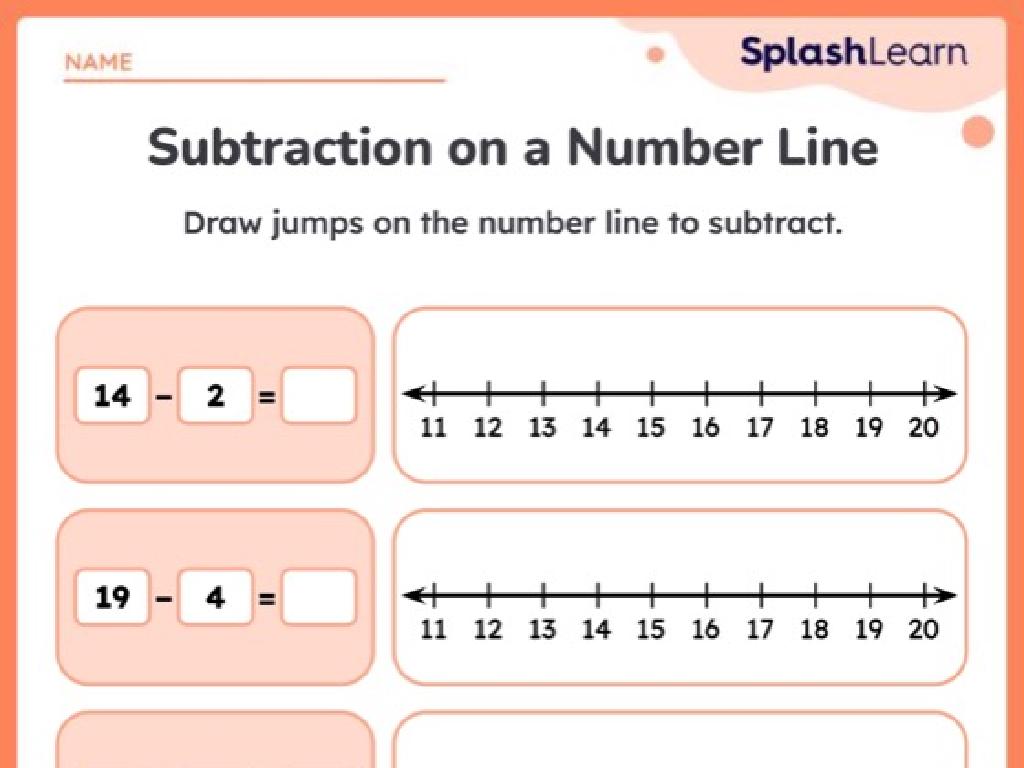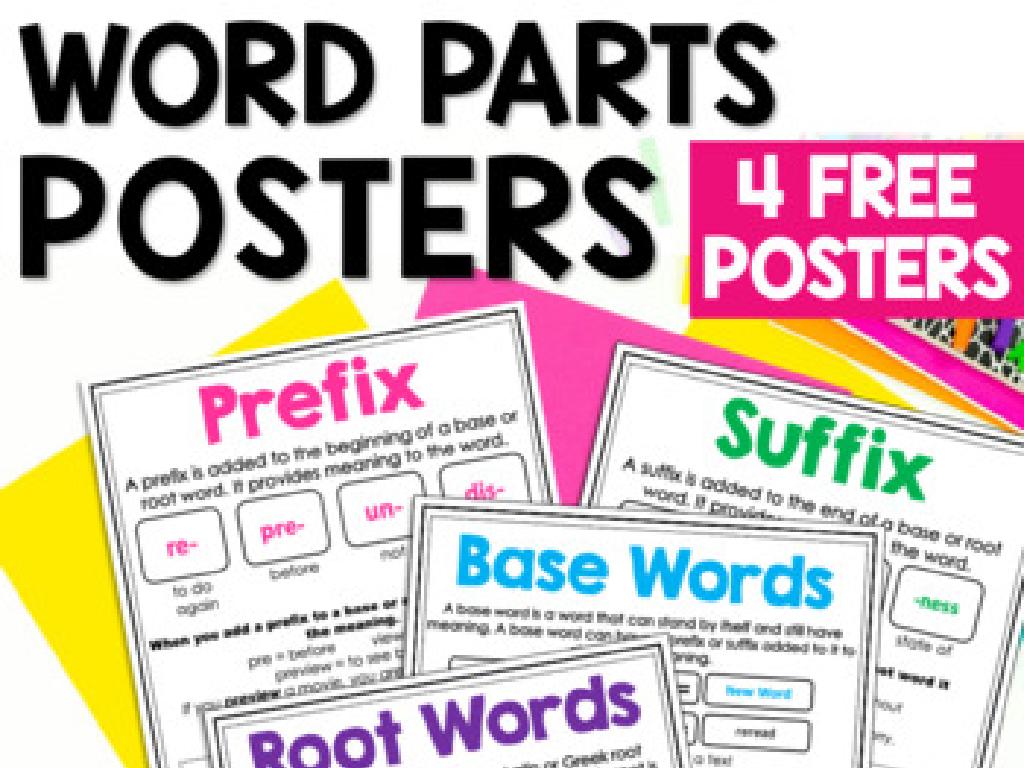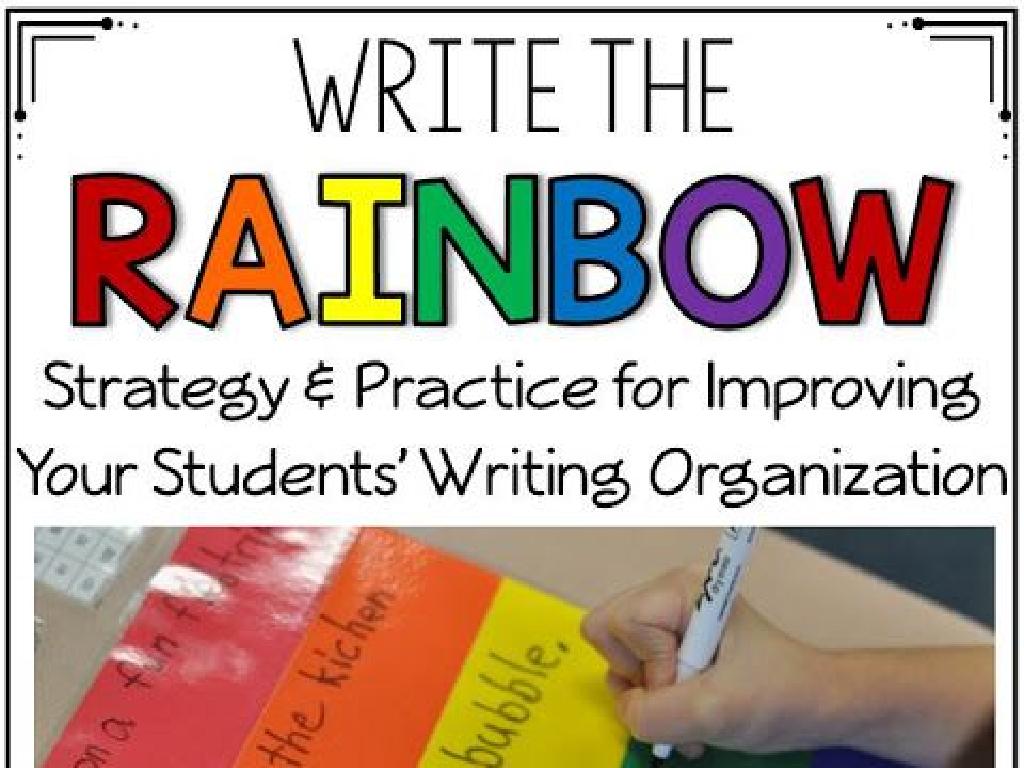Which Customary Unit Of Weight Is Appropriate?
Subject: Math
Grade: Third grade
Topic: Customary Units Of Measurement
Please LOG IN to download the presentation. Access is available to registered users only.
View More Content
Exploring Customary Units of Weight
– What is weight?
– Weight tells us how heavy something is.
– Measuring and comparing weight
– Use scales to see which is heavier or lighter.
– Customary units: ounces, pounds, tons
– Ounces (oz), pounds (lb), and tons are used in the U.S.
– Choosing the right unit
– Use ounces for a pencil, pounds for a dog, tons for a car.
|
This slide introduces students to the concept of weight and the customary units used to measure it. Begin by explaining that weight is a measure of how heavy something is and can be compared by using a scale. Introduce the three main customary units of weight: ounces, pounds, and tons, and explain which units are appropriate for different items based on their weight. For example, ounces are suitable for light items like a pencil, pounds for heavier items like a dog, and tons for very heavy things like a car. Encourage students to think of other examples and to understand why choosing the right unit of weight is important for accurate measurement.
Understanding Weight in Customary Units
– What does weight measure?
– Weight measures how heavy an object is.
– Units: lbs, oz, and tons
– Pounds for heavier objects, ounces for lighter items, and tons for very heavy things.
– Using scales to measure weight
– Scales help us find out how much things weigh.
– Choosing the right unit
– Use ounces for a feather, pounds for a dog, and tons for a car.
|
This slide introduces the concept of weight and its importance in everyday life. Explain that weight is a measure of how heavy something is and can be measured in different units depending on the object’s heaviness. Pounds are commonly used for objects that can be easily lifted, ounces for very light items, and tons for things that are extremely heavy, like vehicles. Demonstrate how to use a scale, possibly bringing in a small scale to show measuring in pounds and ounces. Encourage students to think about different objects and which unit of weight would be most appropriate for them. This will help them understand the practical application of these measurements.
Choosing the Right Customary Unit of Weight
– When to use ounces
– Use for light items, like a pencil or a slice of bread.
– When to use pounds
– Perfect for heavier things, such as a backpack or a cat.
– When to use tons
– Best for really heavy stuff, like a car or an elephant.
|
This slide aims to help students understand the appropriate customary units of weight for different objects. Ounces are suitable for small, lightweight items that can be easily lifted with one hand. Pounds are the next step up and are typically used for objects that require more effort to lift, like a full backpack or a household pet. Tons are reserved for extremely heavy items that are much too heavy to lift without machinery, such as vehicles. Encourage students to think of examples of items for each unit and discuss why that unit is appropriate. You can also plan a hands-on activity where students weigh various objects and decide the most suitable unit of weight.
Choosing the Right Unit of Weight
– How to pick the correct unit
– Match object weight with unit
Is it light like a feather or heavy like a dog?
– Pencil example: use ounces
A pencil is light, so we use ounces instead of pounds.
– Not all objects weigh in pounds
Some things are too light for pounds, like a paperclip or a pencil.
|
This slide is aimed at helping third-grade students understand how to choose the appropriate customary unit of weight for different objects. Start by explaining that the weight of an object determines whether we use ounces, pounds, or tons. Use everyday items as examples to illustrate the concept. For instance, a pencil is quite light and is best measured in ounces, whereas heavier items like a backpack might be measured in pounds. Emphasize that it’s not practical to measure very light objects in pounds because it’s a larger unit of weight. Encourage students to think about items they interact with daily and what units they would use to measure them. This will help them grasp the concept of weight measurement in a tangible way.
Let’s Practice: Choosing the Right Unit of Weight
– What unit for a bicycle?
– What unit for a feather?
– Group activity: Classroom items
– Work together to guess weights
– Discuss reasons for unit choices
– Share your thoughts with the class
|
This slide is for a class activity to help students understand the practical application of customary units of weight. Start by asking the students which unit they would use to measure the weight of a bicycle and a feather to get them thinking about the appropriate units for different objects. Then, move on to a group activity where students will guess the weight of various classroom items using the correct customary units (ounces, pounds, tons). After the activity, facilitate a discussion where each group explains their reasoning behind the unit choices. This will help reinforce their understanding of weight measurement and the use of customary units. Possible items for the activity could include a backpack, a textbook, a pencil, and a piece of paper. Encourage students to think about the size and material of the items to make educated guesses.
Estimating Weight: Without a Scale
– Learn to guess object weight
– Use familiar items for estimation
– Compare with things like apples or books
– Activity: Guess and Check Weights
– First estimate, then use a scale to check
– Understanding weight estimation
– Grasping the concept of weight and how to estimate it
|
This slide introduces students to the concept of estimating the weight of objects without the use of a scale. Encourage students to think about how heavy an object feels compared to familiar items, such as how many apples they think would weigh the same as the object. For the activity, students will make an educated guess about the weight of various classroom objects and then use a scale to measure the actual weight. This will help them develop a sense of the weight of different objects and improve their estimation skills. Possible activities include estimating the weight of their backpack, a textbook, a pencil, and a water bottle. Discuss the results as a class to understand the accuracy of their estimations.
Class Activity: Weight Scavenger Hunt
– Find objects to weigh in class
– Choose the right unit: oz, lb, or tons
– Record each object’s weight
– Use scales to measure and write it down
– Share your discoveries with everyone
– Tell us why you chose oz, lb, or tons
|
This interactive activity is designed to help students understand and apply their knowledge of customary units of weight. Provide students with scales to measure the weight of various objects found in the classroom. Guide them to decide whether the weight of each object is best expressed in ounces, pounds, or tons. Encourage them to think about the appropriateness of the unit for the object’s weight. For example, paperclips might be in ounces, a backpack in pounds, and the classroom’s bookshelf might be imagined in tons. After the activity, have students share their findings and reasoning with the class. This will foster a discussion about weight estimation and the practical use of different units. Prepare to offer assistance in understanding when to use each unit and ensure that each student has a chance to participate and share.
Conclusion: Choosing the Right Unit of Weight
– Recap: ounces, pounds, tons
– Importance of correct unit
– Using the right unit makes our measurements accurate and understandable.
– How to choose the unit
– Consider the weight of the object; use ounces for light items, pounds for heavier, and tons for very heavy objects.
– Up next: Length Measurement!
|
As we wrap up today’s lesson on customary units of weight, it’s crucial to remind students of the three main units: ounces, pounds, and tons. Emphasize the importance of choosing the appropriate unit for accuracy and clarity in communication. Provide examples such as a feather (ounces), a textbook (pounds), and a car (tons) to illustrate the concept. Prepare the students for the next class by telling them we will be exploring length measurement. Encourage them to think about objects in their environment and what units they might use to measure them.






